I wrote a book several years ago about police and military motorcycles, and I receive some interesting emails as a result. Back in the 1990s, one of those emails was from Captain Jose Paredes Desiderio, who at that time headed Ecuador’s presidential motorcycle escort unit. Capitano Paredes sent this narrative and these great photos to me and I want to share them with you. The photos are awesome, especially the ones from the old days. The translation came from Google with a few minor tweaks by me. Captain Paredes, thank you very much!
My name is Jose Paredes Desiderio and I work in the Transit Commission of Guayas province (we are traffic police in the province of Guayas). I have the rank of captain and I am head of the Department of the Presidential Escort. I saw pictures of the motorcycle riders who have used different motorcycles of different brands worldwide and I am sending some photos to have so that you can know that my country ECUADOR has also used different brands of motorcycles. Here is a short history of the institution to which I belong.
The Transit Commission of Guayas Province purchased its first motorcycle for traffic control within the Province of Guayas.
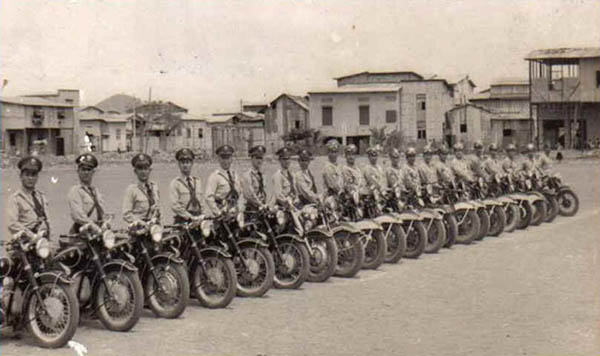 You can see how the public admire Guayasense, a motorcyclist and Lord of the Transit Commission of Guayas Province at that time.
You can see how the public admire Guayasense, a motorcyclist and Lord of the Transit Commission of Guayas Province at that time.
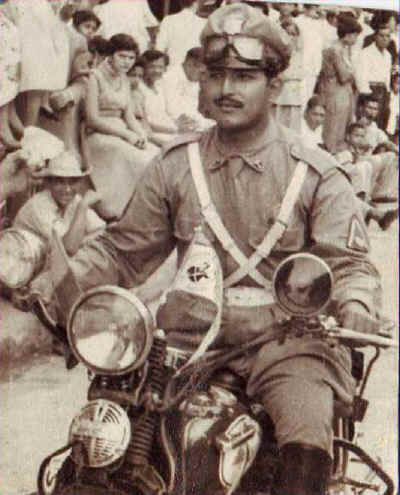 During the beginning 50 years, the Presidential Escort was established with the primary mission of escorting and providing security to the President and Vice-President of the Republic. They lit the alarm sirens, lights flashing resplendent in their motorcycles. The seated gentlemen guards were ordered in strategic caravans taking custody of the Presidential car with professionalism and responsibility.
During the beginning 50 years, the Presidential Escort was established with the primary mission of escorting and providing security to the President and Vice-President of the Republic. They lit the alarm sirens, lights flashing resplendent in their motorcycles. The seated gentlemen guards were ordered in strategic caravans taking custody of the Presidential car with professionalism and responsibility.
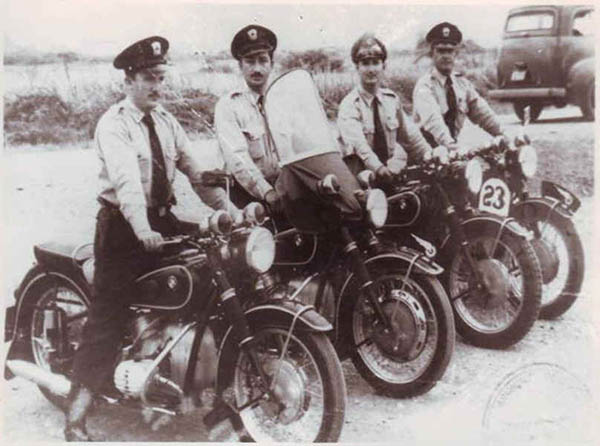 We appreciate the members of the Presidential Escort’s professionalism and accountability. Here they are with His Excellency, Mr. President of the Republic of Ecuador, Dr. Jose Maria Velasco Ibarra.
We appreciate the members of the Presidential Escort’s professionalism and accountability. Here they are with His Excellency, Mr. President of the Republic of Ecuador, Dr. Jose Maria Velasco Ibarra.
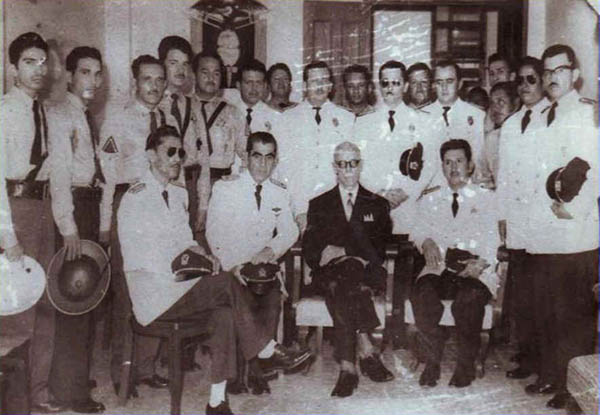 Here we can see Vigilante Vicente Alvarado doing acrobatics and practicing on his motorized vehicle (motorcycle) at the start of the Training School of Presidential Escort.
Here we can see Vigilante Vicente Alvarado doing acrobatics and practicing on his motorized vehicle (motorcycle) at the start of the Training School of Presidential Escort.
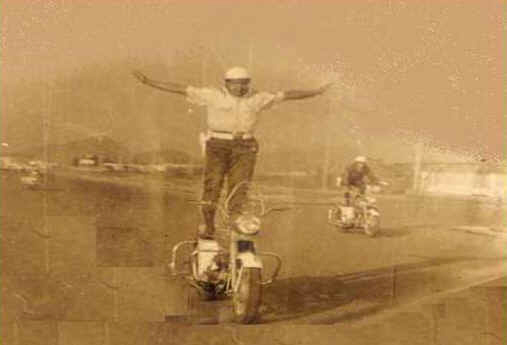 In the 80 years of its existence the Transit Commission has renewed its fleet by acquiring brand new 750 cc Suzuki motorcycles, which were used for the Presidential Escort. Here we see Mr. Transit Chief Mayor Jorge Peñafiel Ball, and Mr. Sub Chief Transit Mayor Carlos Palacios Torres.
In the 80 years of its existence the Transit Commission has renewed its fleet by acquiring brand new 750 cc Suzuki motorcycles, which were used for the Presidential Escort. Here we see Mr. Transit Chief Mayor Jorge Peñafiel Ball, and Mr. Sub Chief Transit Mayor Carlos Palacios Torres.
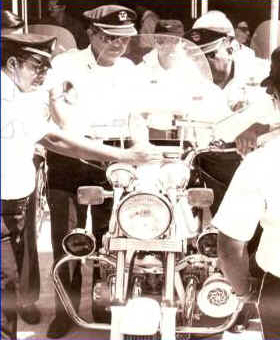
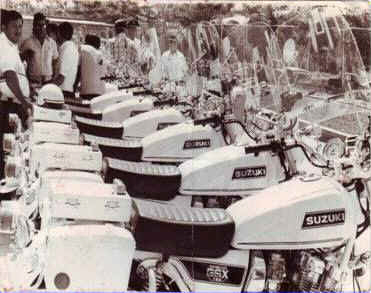 In the 1990s, the leading institution for transit renewed its fleet by acquiring 750 cc Honda motorcycles.
In the 1990s, the leading institution for transit renewed its fleet by acquiring 750 cc Honda motorcycles.
 In gratitude for the performance of motorcyclists who were part of the Presidential Escort, the department received Harley Davidson Motorcycles.
In gratitude for the performance of motorcyclists who were part of the Presidential Escort, the department received Harley Davidson Motorcycles.
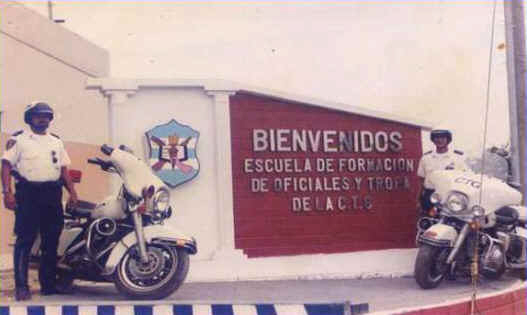 Festivities in Juliana’s staff. Here is 92 years of motorcycle experience in the Presidential Escort to the President of the Republic Arch Sixto Durán Ballén, from left to right subway. Miguel Leon Czech Subway. Miguel Rosero Huacón, Sgt. Ely Lopez Duran and subway. José Paredes Desiderio (current head of the Department Presidential Escort).
Festivities in Juliana’s staff. Here is 92 years of motorcycle experience in the Presidential Escort to the President of the Republic Arch Sixto Durán Ballén, from left to right subway. Miguel Leon Czech Subway. Miguel Rosero Huacón, Sgt. Ely Lopez Duran and subway. José Paredes Desiderio (current head of the Department Presidential Escort).
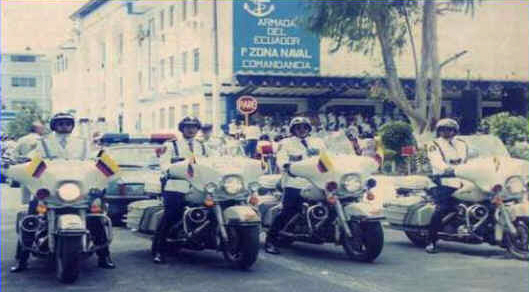 In 2004, the Transit Commission of Guayas Province acquires new motorcycles for the department of the Presidential Escort. These are the 1150 cc BMW brand.
In 2004, the Transit Commission of Guayas Province acquires new motorcycles for the department of the Presidential Escort. These are the 1150 cc BMW brand.
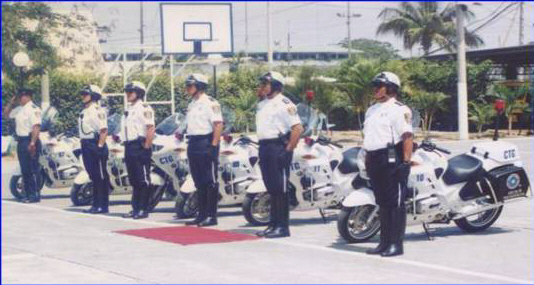 The Escort also received Suzuki Motorcycles of 500cc, which were acquired together with the BMW for the Department of the Presidential Escort CTG.
The Escort also received Suzuki Motorcycles of 500cc, which were acquired together with the BMW for the Department of the Presidential Escort CTG.
 Here are Motorcyclists who took part in the caravan escorting Mr. Former President of the USA George Bush during his visit to the city of Guayaquil.
Here are Motorcyclists who took part in the caravan escorting Mr. Former President of the USA George Bush during his visit to the city of Guayaquil.
 Here is the Head of Department (Cap. Jose Paredes Desiderio) planning with the class officers and gentlemen vigilant routes before a shift is going to escort some of the important people who visit the city of Guayaquil and Guayas Province.
Here is the Head of Department (Cap. Jose Paredes Desiderio) planning with the class officers and gentlemen vigilant routes before a shift is going to escort some of the important people who visit the city of Guayaquil and Guayas Province.
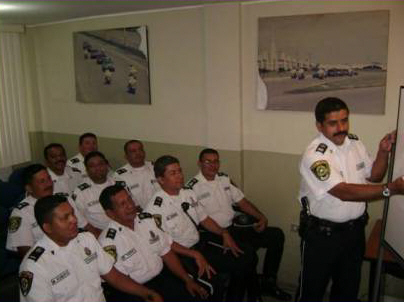 This is the Staff of the Presidential Escort doing acrobatics on BMW motorcycles.
This is the Staff of the Presidential Escort doing acrobatics on BMW motorcycles.
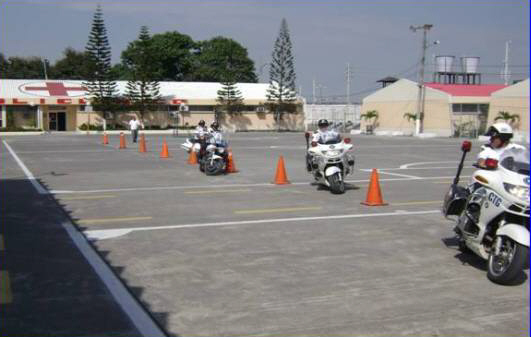
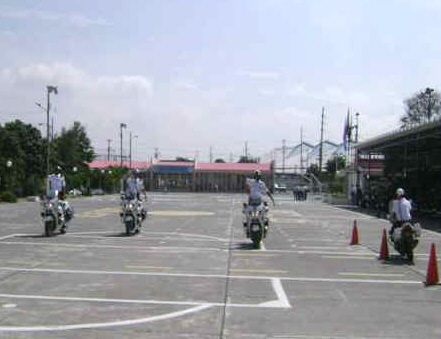 Like any other institution in the country and the world, women now form part of this great institution in the GUAYAS transit Commission. These beautiful and distinguished ladies who have the mystique and taste for wearing a uniform have the ability and skill to drive a motor vehicle, which has led them to join the select group of the Presidential Escort of the Province of Guayas.
Like any other institution in the country and the world, women now form part of this great institution in the GUAYAS transit Commission. These beautiful and distinguished ladies who have the mystique and taste for wearing a uniform have the ability and skill to drive a motor vehicle, which has led them to join the select group of the Presidential Escort of the Province of Guayas.
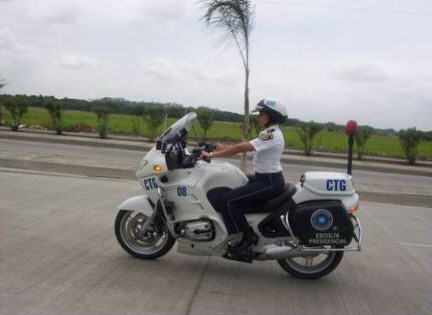
 At present I am trying to communicate with police elsewhere in the world who are interested in training with modern techniques and exchange knowledge. We ask them to share their his knowledge by writing to my mail (jparedesd@ctg.gov.ec). If any groups use Harley Davidson, BMW, Honda, Suzuki, etc. and would like to educate two members of this institution which I represent I ask you to contact me.
At present I am trying to communicate with police elsewhere in the world who are interested in training with modern techniques and exchange knowledge. We ask them to share their his knowledge by writing to my mail (jparedesd@ctg.gov.ec). If any groups use Harley Davidson, BMW, Honda, Suzuki, etc. and would like to educate two members of this institution which I represent I ask you to contact me.
Wow, that’s quite a letter, and quite an impressive collection of vintage police motorcycle photographs. Captain Paredes, thanks again!



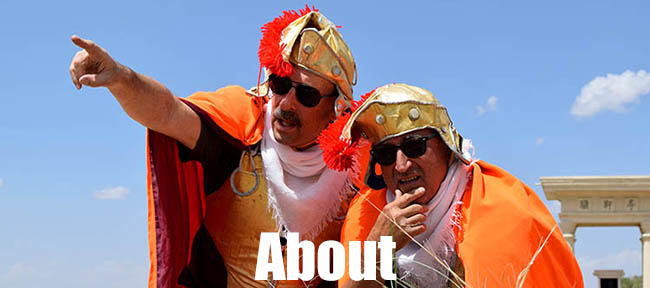
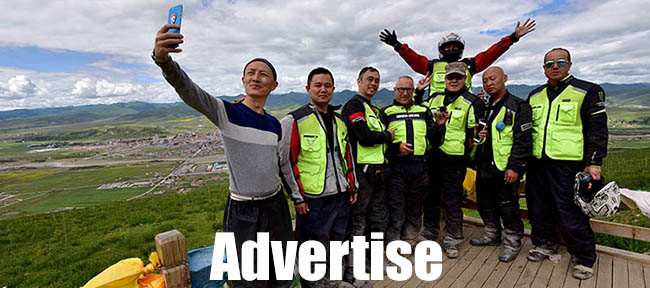

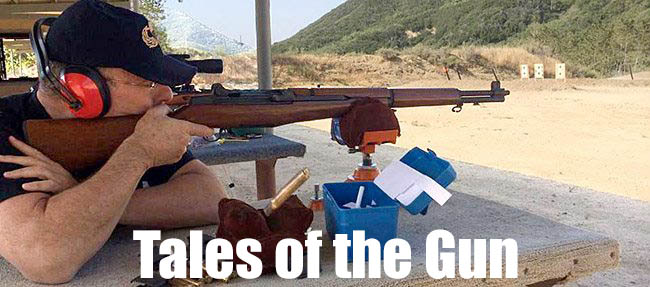

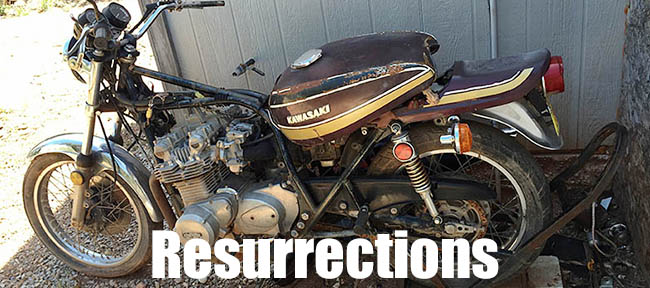
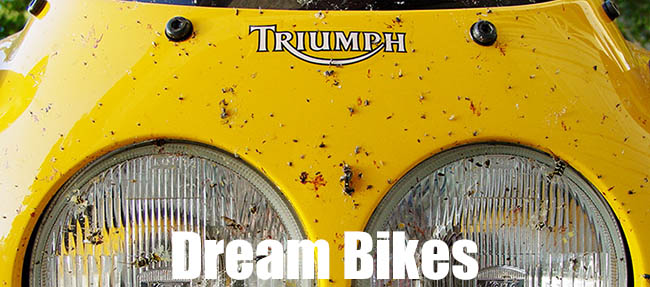
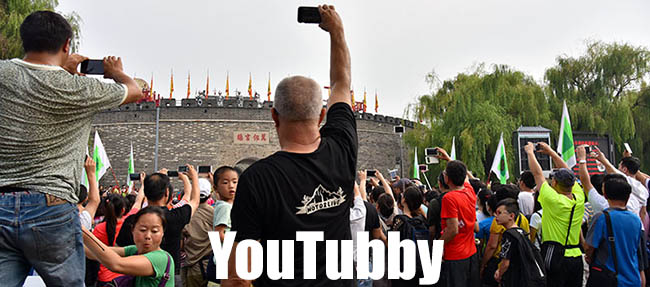

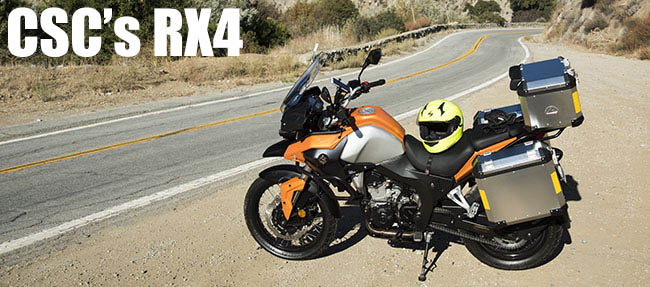
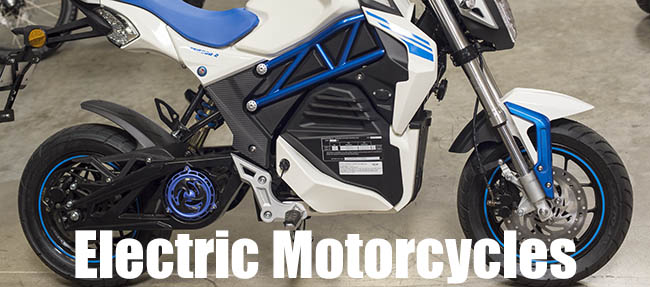
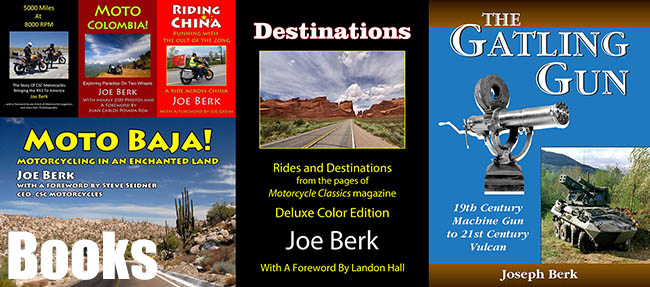
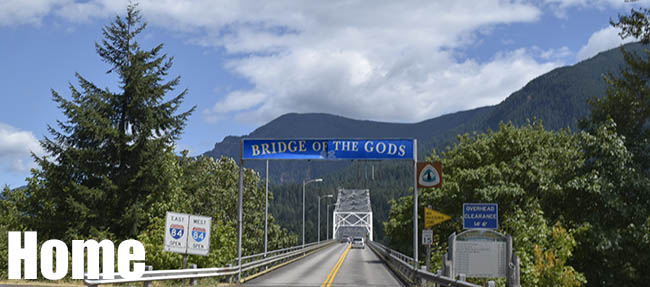
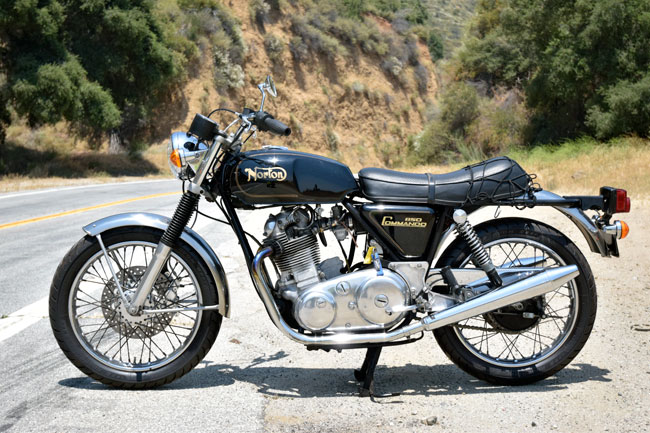 Hey, there’s more good stuff coming your way. We do our best to blog every day, and we’ve got great stories lined up for you:
Hey, there’s more good stuff coming your way. We do our best to blog every day, and we’ve got great stories lined up for you:
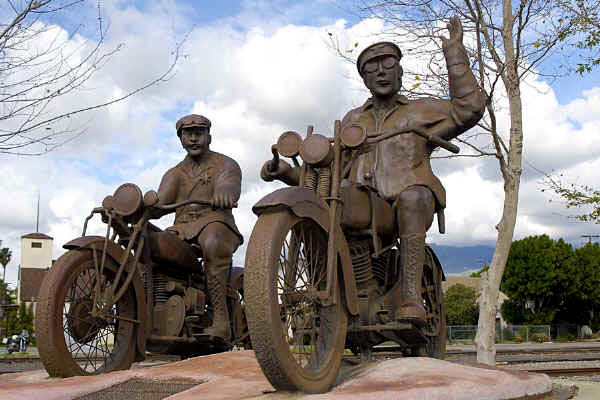
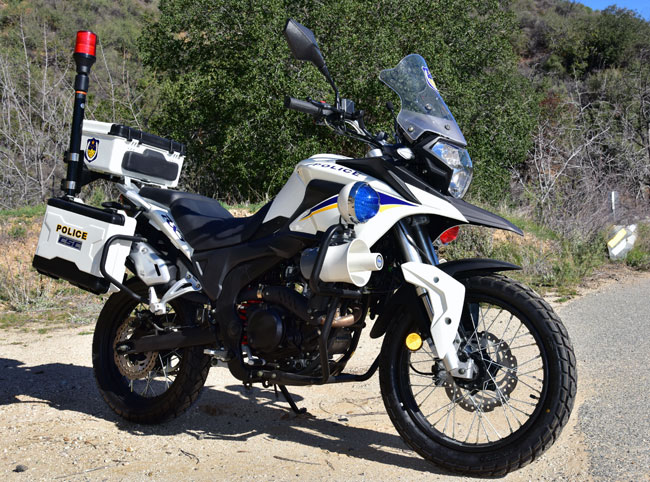 A few years ago when visiting the Zongshen plant in Chongqing, I spotted an RX3 set up as a police bike. It caught my eye for several reasons. First and foremost, it was a snappy looking motorcycle. I had written the
A few years ago when visiting the Zongshen plant in Chongqing, I spotted an RX3 set up as a police bike. It caught my eye for several reasons. First and foremost, it was a snappy looking motorcycle. I had written the 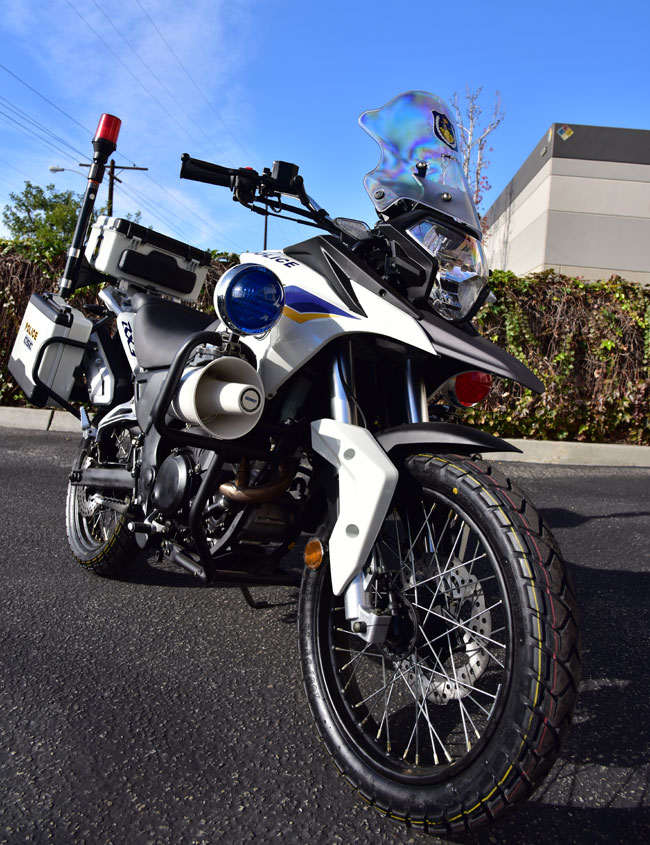
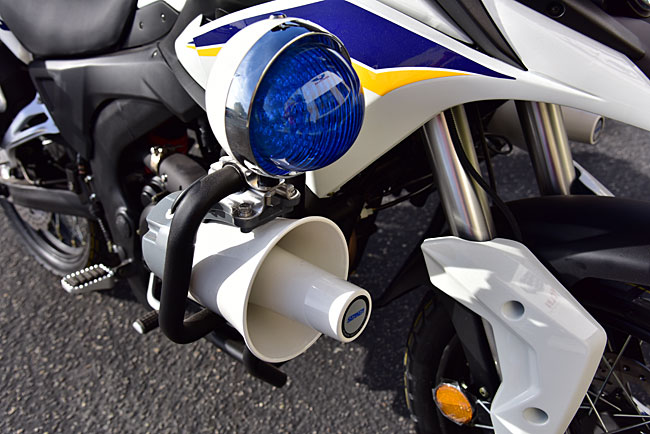
 I was still pumped about the police bike, though, and I convinced CSC to bring the RX3-P to the US for a trial marketing period. You can see my enthusiasm in the video we put together on the bike…
I was still pumped about the police bike, though, and I convinced CSC to bring the RX3-P to the US for a trial marketing period. You can see my enthusiasm in the video we put together on the bike… We publicized the bike big time on the CSC blog, and I think that got noticed around the world. The RX3-P found a home with several large police departments in Asia and South America. That’s a good thing, because it’s a great bike. I’d still like to see it happen here in America. I imagine Zongshen will introduce a police version of their RX4, and maybe that larger bike will have a better chance at breaking into the US police motorcycle market. Someday. Maybe. We’ll see.
We publicized the bike big time on the CSC blog, and I think that got noticed around the world. The RX3-P found a home with several large police departments in Asia and South America. That’s a good thing, because it’s a great bike. I’d still like to see it happen here in America. I imagine Zongshen will introduce a police version of their RX4, and maybe that larger bike will have a better chance at breaking into the US police motorcycle market. Someday. Maybe. We’ll see. You can see how the public admire Guayasense, a motorcyclist and Lord of the Transit Commission of Guayas Province at that time.
You can see how the public admire Guayasense, a motorcyclist and Lord of the Transit Commission of Guayas Province at that time. During the beginning 50 years, the Presidential Escort was established with the primary mission of escorting and providing security to the President and Vice-President of the Republic. They lit the alarm sirens, lights flashing resplendent in their motorcycles. The seated gentlemen guards were ordered in strategic caravans taking custody of the Presidential car with professionalism and responsibility.
During the beginning 50 years, the Presidential Escort was established with the primary mission of escorting and providing security to the President and Vice-President of the Republic. They lit the alarm sirens, lights flashing resplendent in their motorcycles. The seated gentlemen guards were ordered in strategic caravans taking custody of the Presidential car with professionalism and responsibility. We appreciate the members of the Presidential Escort’s professionalism and accountability. Here they are with His Excellency, Mr. President of the Republic of Ecuador, Dr. Jose Maria Velasco Ibarra.
We appreciate the members of the Presidential Escort’s professionalism and accountability. Here they are with His Excellency, Mr. President of the Republic of Ecuador, Dr. Jose Maria Velasco Ibarra. Here we can see Vigilante Vicente Alvarado doing acrobatics and practicing on his motorized vehicle (motorcycle) at the start of the Training School of Presidential Escort.
Here we can see Vigilante Vicente Alvarado doing acrobatics and practicing on his motorized vehicle (motorcycle) at the start of the Training School of Presidential Escort. In the 80 years of its existence the Transit Commission has renewed its fleet by acquiring brand new 750 cc Suzuki motorcycles, which were used for the Presidential Escort. Here we see Mr. Transit Chief Mayor Jorge Peñafiel Ball, and Mr. Sub Chief Transit Mayor Carlos Palacios Torres.
In the 80 years of its existence the Transit Commission has renewed its fleet by acquiring brand new 750 cc Suzuki motorcycles, which were used for the Presidential Escort. Here we see Mr. Transit Chief Mayor Jorge Peñafiel Ball, and Mr. Sub Chief Transit Mayor Carlos Palacios Torres.
 In the 1990s, the leading institution for transit renewed its fleet by acquiring 750 cc Honda motorcycles.
In the 1990s, the leading institution for transit renewed its fleet by acquiring 750 cc Honda motorcycles. In gratitude for the performance of motorcyclists who were part of the Presidential Escort, the department received Harley Davidson Motorcycles.
In gratitude for the performance of motorcyclists who were part of the Presidential Escort, the department received Harley Davidson Motorcycles. Festivities in Juliana’s staff. Here is 92 years of motorcycle experience in the Presidential Escort to the President of the Republic Arch Sixto Durán Ballén, from left to right subway. Miguel Leon Czech Subway. Miguel Rosero Huacón, Sgt. Ely Lopez Duran and subway. José Paredes Desiderio (current head of the Department Presidential Escort).
Festivities in Juliana’s staff. Here is 92 years of motorcycle experience in the Presidential Escort to the President of the Republic Arch Sixto Durán Ballén, from left to right subway. Miguel Leon Czech Subway. Miguel Rosero Huacón, Sgt. Ely Lopez Duran and subway. José Paredes Desiderio (current head of the Department Presidential Escort). In 2004, the Transit Commission of Guayas Province acquires new motorcycles for the department of the Presidential Escort. These are the 1150 cc BMW brand.
In 2004, the Transit Commission of Guayas Province acquires new motorcycles for the department of the Presidential Escort. These are the 1150 cc BMW brand. The Escort also received Suzuki Motorcycles of 500cc, which were acquired together with the BMW for the Department of the Presidential Escort CTG.
The Escort also received Suzuki Motorcycles of 500cc, which were acquired together with the BMW for the Department of the Presidential Escort CTG. Here are Motorcyclists who took part in the caravan escorting Mr. Former President of the USA George Bush during his visit to the city of Guayaquil.
Here are Motorcyclists who took part in the caravan escorting Mr. Former President of the USA George Bush during his visit to the city of Guayaquil. Here is the Head of Department (Cap. Jose Paredes Desiderio) planning with the class officers and gentlemen vigilant routes before a shift is going to escort some of the important people who visit the city of Guayaquil and Guayas Province.
Here is the Head of Department (Cap. Jose Paredes Desiderio) planning with the class officers and gentlemen vigilant routes before a shift is going to escort some of the important people who visit the city of Guayaquil and Guayas Province. This is the Staff of the Presidential Escort doing acrobatics on BMW motorcycles.
This is the Staff of the Presidential Escort doing acrobatics on BMW motorcycles.
 Like any other institution in the country and the world, women now form part of this great institution in the GUAYAS transit Commission. These beautiful and distinguished ladies who have the mystique and taste for wearing a uniform have the ability and skill to drive a motor vehicle, which has led them to join the select group of the Presidential Escort of the Province of Guayas.
Like any other institution in the country and the world, women now form part of this great institution in the GUAYAS transit Commission. These beautiful and distinguished ladies who have the mystique and taste for wearing a uniform have the ability and skill to drive a motor vehicle, which has led them to join the select group of the Presidential Escort of the Province of Guayas.
 At present I am trying to communicate with police elsewhere in the world who are interested in training with modern techniques and exchange knowledge. We ask them to share their his knowledge by writing to my mail (jparedesd@ctg.gov.ec). If any groups use Harley Davidson, BMW, Honda, Suzuki, etc. and would like to educate two members of this institution which I represent I ask you to contact me.
At present I am trying to communicate with police elsewhere in the world who are interested in training with modern techniques and exchange knowledge. We ask them to share their his knowledge by writing to my mail (jparedesd@ctg.gov.ec). If any groups use Harley Davidson, BMW, Honda, Suzuki, etc. and would like to educate two members of this institution which I represent I ask you to contact me.
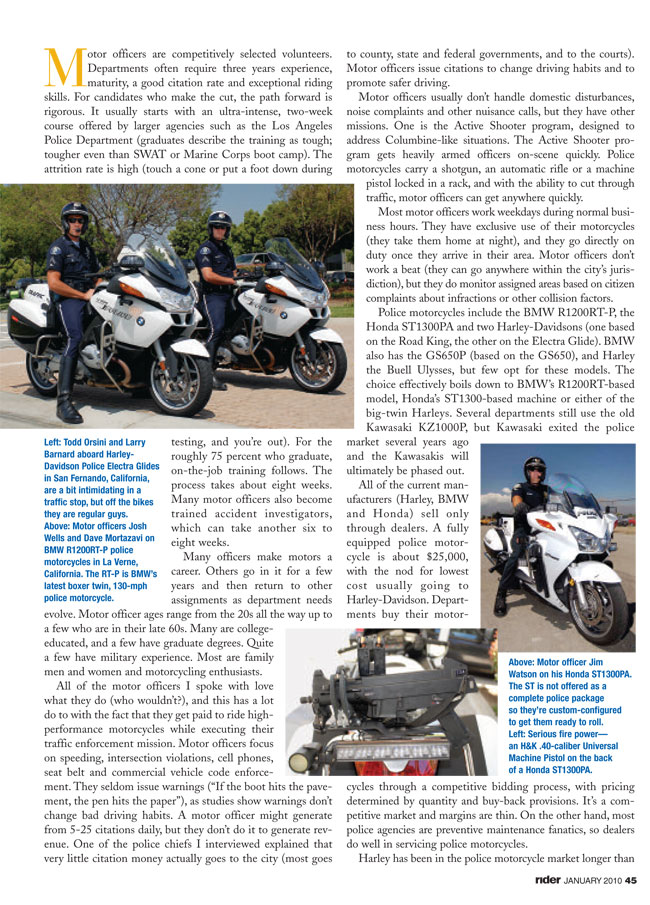
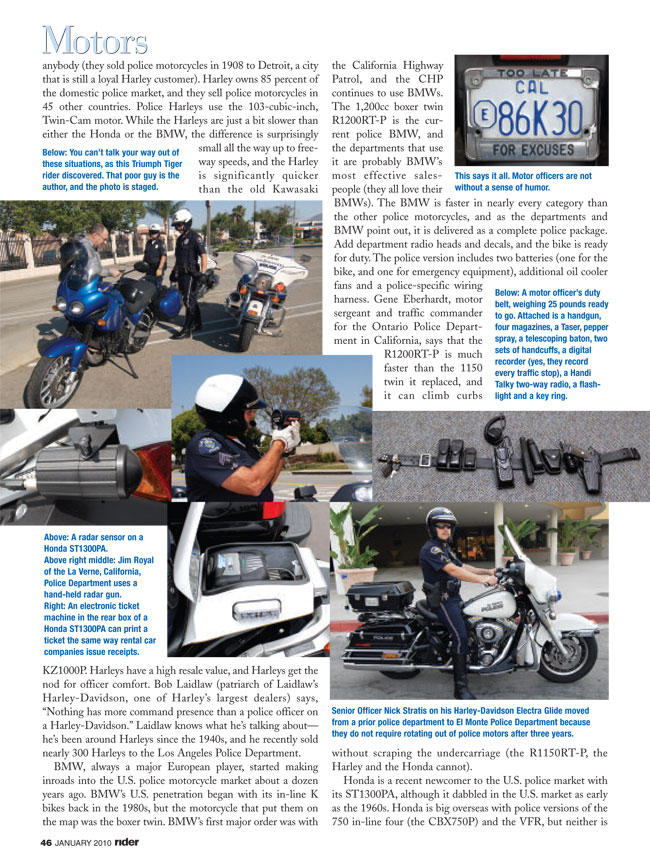
 I staged one of the photos above to show a couple of San Fernando Valley police officers stopping me on my Triumph Tiger. That was one of the most interesting parts of the research. I interviewed the two SFV officers in the police station and they were regular guys. Joking, telling stories, you know the drill. I was having fun listening to them and trying to capture it all in my notes. One of the officers suggested going outside for more photos, and with that, both of them put on their helmets and sunglasses. The transformation was dramatic. With their helmets off, they were two regular (and different) guys. When the helmets and shades went on, they became RoboCop. They were indistinguishable, all business, no room for nonsense. Serious. Emotionless. No more smoking and joking. The real deal.
I staged one of the photos above to show a couple of San Fernando Valley police officers stopping me on my Triumph Tiger. That was one of the most interesting parts of the research. I interviewed the two SFV officers in the police station and they were regular guys. Joking, telling stories, you know the drill. I was having fun listening to them and trying to capture it all in my notes. One of the officers suggested going outside for more photos, and with that, both of them put on their helmets and sunglasses. The transformation was dramatic. With their helmets off, they were two regular (and different) guys. When the helmets and shades went on, they became RoboCop. They were indistinguishable, all business, no room for nonsense. Serious. Emotionless. No more smoking and joking. The real deal.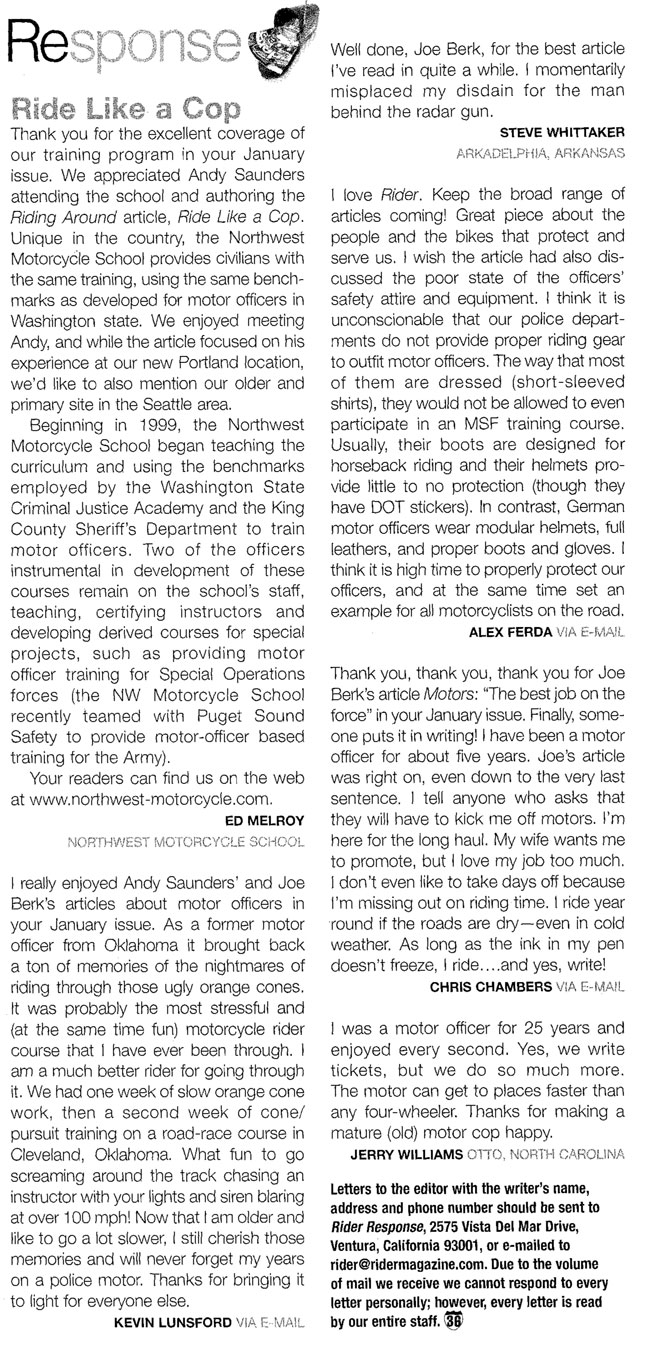 Fun times, to be sure. I really enjoyed doing that story, and before we wrap up this blog, here’s another bit of trivia: I first saw “Motors” in print while recovering from a motorcycle accident (I got busted up pretty good and I had a lot of time to catch up on my reading). The first responder on that one was Jim Royal, a La Verne, California, motor officer. Just a few weeks before my crash I shot photos of Jim for this very story. One had Jim holding a radar gun; it’s the photo you see in the article above.
Fun times, to be sure. I really enjoyed doing that story, and before we wrap up this blog, here’s another bit of trivia: I first saw “Motors” in print while recovering from a motorcycle accident (I got busted up pretty good and I had a lot of time to catch up on my reading). The first responder on that one was Jim Royal, a La Verne, California, motor officer. Just a few weeks before my crash I shot photos of Jim for this very story. One had Jim holding a radar gun; it’s the photo you see in the article above.